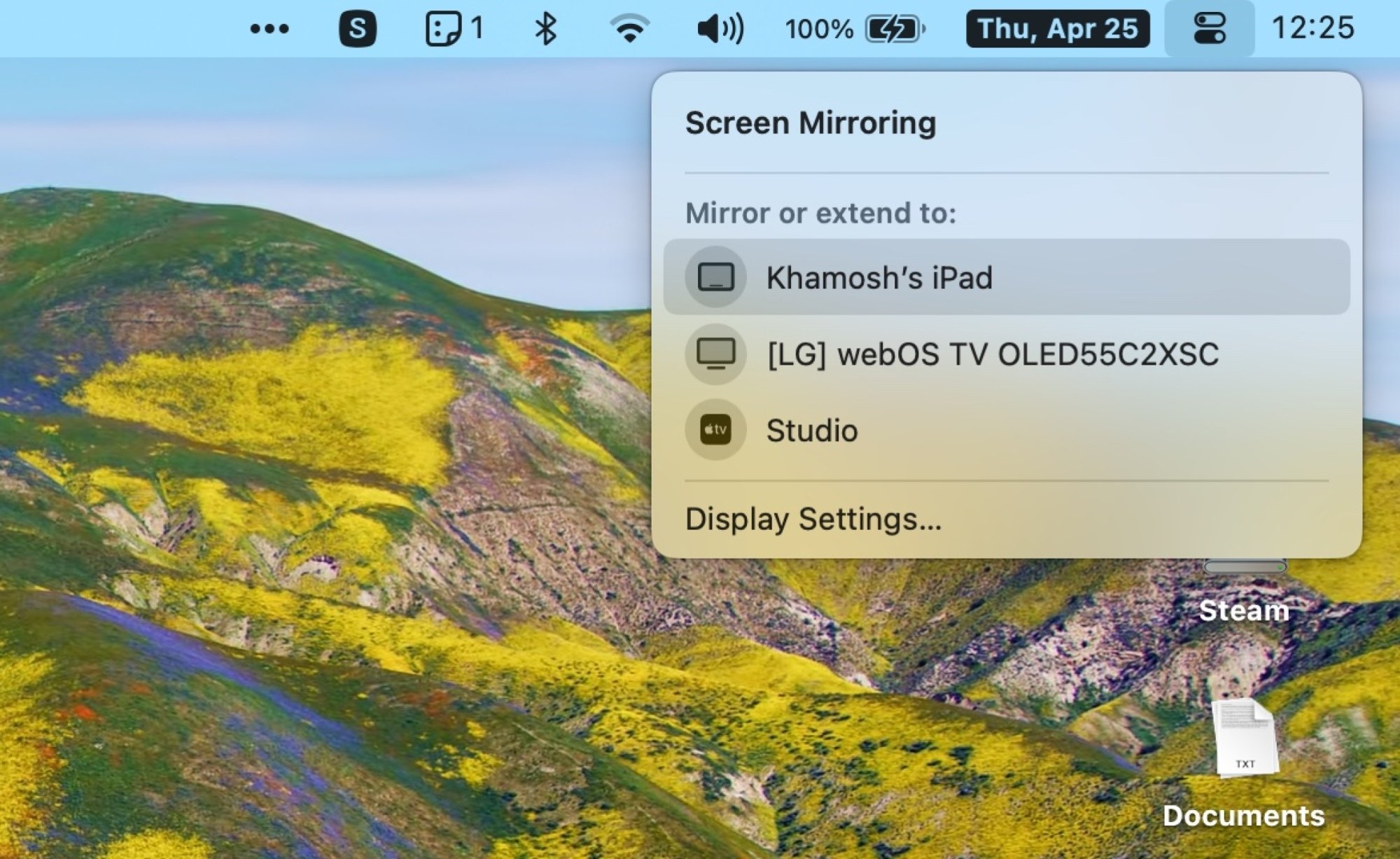
It’s no secret that Apple products work well with one another. But you might not know you can actually turn your iPad into a high-quality secondary display for your Mac. Whether you have a desktop setup, or you’re traveling, you can use your iPad as a wireless display to showcase any app from your computer. It’s as easy as screen mirroring your Mac to your TV, thanks to a relatively hidden macOS feature called Sidecar.
What you need to use your iPad as a display
First, the requirements. You’ll need a Mac running macOS Catalina or higher, and an iPad running iPadOS 13 or higher. There are some hardware restrictions as well, though every MacBook Pro released after 2016, and MacBook Air released after 2018 will work. In general, the latest Macs from the last 5 years are supported. The same goes for the iPads as well. All models of iPad Pros work, and every iPad 6th generation and newer, as well as iPad Air 3rd generation and newer will work here.
Still, you might need to do some work on the software side. First, both devices have to be signed in from the same Apple ID, and you have to use two-factor authentication. To use this feature wirelessly, you have to enable Bluetooth, wifi, and Handoff on your iPad. To enable Handoff, go to Settings > General > Airplay & Handoff > Handoff. If you’re using tethering on your iPad or your Mac, this feature won’t work.
How to connect your iPad as a second display to your Mac
Now that the housekeeping is done, you can set up your iPad as a secondary display. First, place the iPad next to the Mac, turn on the display, and unlock it.
Next, go to Control Center on your Mac, click Screen Mirroring, and choose your iPad from the list.

Credit: Khamosh Pathak
To use it as a secondary monitor, make sure you choose the Use As Separate Display option. You’ll notice your iPad will instantly show your Mac’s screen, including the menu bar, and some apps might even move to the iPad screen. To help you out, the iPad can show a sidebar, plus touch bar controls that are useful if you’re using the iPad away from your Mac. If you want more screen space for your Mac apps, we suggest disabling both the sidebar and the touch bar. You can do this on your Mac under System Settings > Displays.

Credit: Khamosh Pathak
The above instructions will work if you’re using macOS Monterey and higher. If you’re using macOS Big Sur, you’ll find the mirroring menu in Control Center’s Display section.
Lastly, make sure how you’ve placed your iPad in physical space aligns with how your macOS software is set up. If you’ve ever attached an external monitor to your Mac, and tried to use it next to your MacBook, you’ll be familiar with this.
Essentially, you can tell macOS that your iPad sits on the left or right of the Mac so that your cursor can seamlessly move from one screen to another. To do this, go to System Settings > Displays. Here, you’ll see the current arrangement of your displays. If the default option works for you, then you don’t need to do anything.

Credit: Khamosh Pathak
If you want to move your iPad screen position, click the Arrange button, freely drag the iPad screen to where it is in your physical space, and click the Done button.

Credit: Khamosh Pathak
Everything you can do with your iPad as a second display

Credit: Khamosh Pathak
Now that you’re all set up, you can freely move your cursor between your Mac display and your iPad, and you can use the iPad like it’s any other external display. This is similar to Apple’s other feature, Universal Control, where you can use the keyboard and mouse on your Mac with a connected iPad. The crucial difference with Sidecar, however, is that your Mac screen is also extended to the iPad. With Universal Control, your iPad still displays iPadOS.

Credit: Khamosh Pathak
If you don’t like dragging and dropping windows between the Mac and the iPad, there’s a shortcut for you. Hover over the Maximize button on any macOS window, and you’ll see an option to move the window to the iPad. I like using this option because it automatically resizes the window to take up the full iPad display.
This feature does disables the touch screen on your iPad, so it’s not the touch screen Mac of your dreams. That said, Sidecar does support Apple Pencil. You can use your Pencil to draw on the screen, and you can even go to System Settings > Displays to enable the double-tap feature on the Apple Pencil, which lets you make selections on your iPad.








